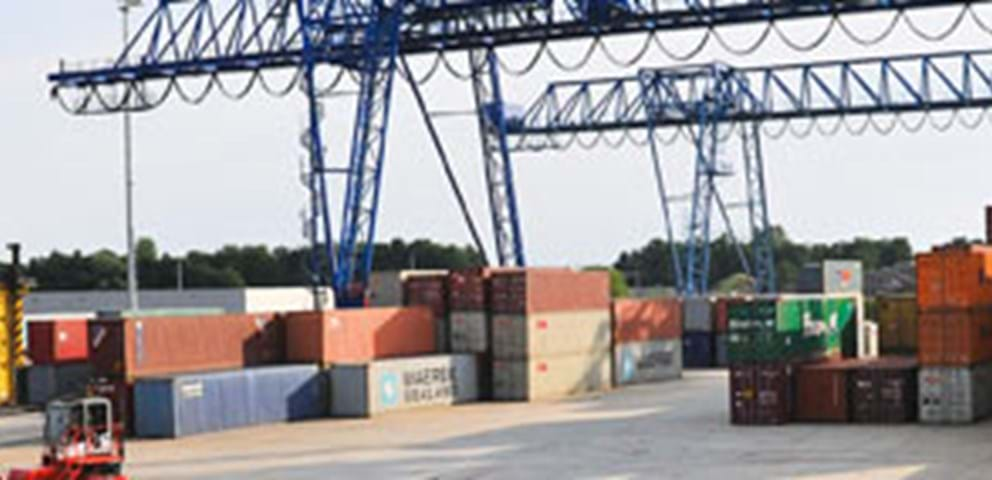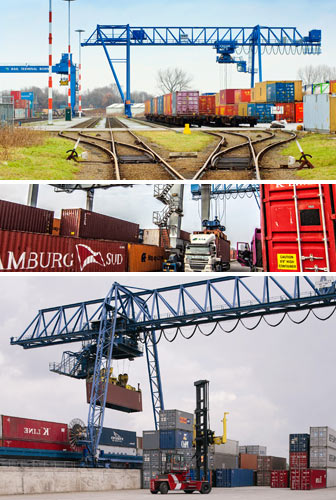
An ideal location
Sittard-Geleen: Logistics hub for Europe
Sittard-Geleen is an important location within the logistic nexus of South Limburg, thanks to its location on the national and international network of road, rail, and waterway connections and the proximity of Maastricht Aachen Airport. Of course, its location within the Euregional network is also an important factor. For road transport purposes, Sittard-Geleen is advantageously located for both the A2 (North-South axis) and the A76 (East-West axis).
The completion of the N297n (Born–Selfkant–B56n) will also offer an important new route between Belgium and Germany's metropolitan Ruhr area as an additional advantage, securing convenience of transport to, from, and between not only the Dutch Randstad conurbation but these important Belgian and German regions as well. The zone around the A2 in particular is recognized as a development axis for industry and knowledge work (Chemelot and the hubs of Born and Stein). The most important areas for goods transport in the city are connected via a number of larger regional and urban roadways.
Transport by rail uses the Maastricht-Randstad and Heerlen-Randstad rail lines. Sittard-Geleen is the connection between these two lines. Branching lines feeding into them from DSM/Chemelot have been established. Likewise, there are connections to them running directly to the terminals in Born and Stein for transshipment for transport by water. Ship transport sails via the Julianakanaal.
Low taxes, prime location
The Netherlands is one of Western Europe's favourite countries to distribute from, in part because of low taxes and smooth and streamlined import processes for goods. And within the country, Limburg's geographic location and good infrastructure make it the ideal staging ground for any company wishing to take Europe by storm.

International network
Limburg's long and historic role in the history of international trade has given it a highly developed service industry today. And its reliable network of waterways, roads, utilities networks, rail, and airports are the backbone of the logistics infrastructure that keeps the region a leader in services. Major logistic hubs are concentrated around the well-developed ports, airports, and terminals. South Limburg alone is home to 35 European distribution centres.
Barge Terminal Sittard-Geleen now largest inland terminal in the Netherlands
The new quay at Holtum-Noord opened in 2012, making it the Netherlands' largest inland terminal and a tri-modal transport hub (ship, rail, and road). The expansion has doubled the port's capacity to 300,000 TEU, and the terminal is now accessible to container ships up to four containers high.
Thanks to a previous raising of the bridge heights on the Julianakanaal, Holtum-Noord is now accessible to ships carrying up to four layers of containers. It also provides an inland port that smaller transport ships can reach from the coast, some two hundred kilometres away. The goods transshipped here originate from or are headed for Dutch, German, or Belgian destinations. With this expansion, the Barge Terminal is ready for the growth in the number of sea containers going from and to the seaports. Inland waterway transport to the hinterland is expected to increase dramatically in the coming years, particularly with the growth of the Port of Rotterdam and the rise of the Second Maasvlakte. Four ships, ranging in capacity from 150 to 300 TEU, now sail continuously between Holtum-Noord and the sea terminals in Rotterdam and Antwerp. The barge terminal handles over two hundred thousand TEU per week. An added advantage is that Holtum-Noord can handle customs processing, to minimize delays at the seaports.